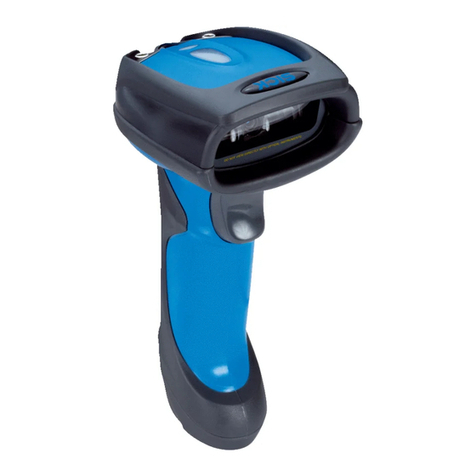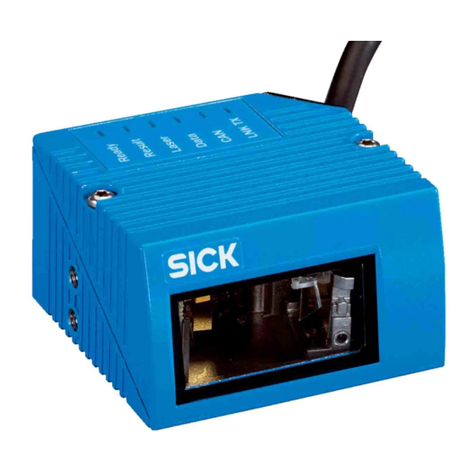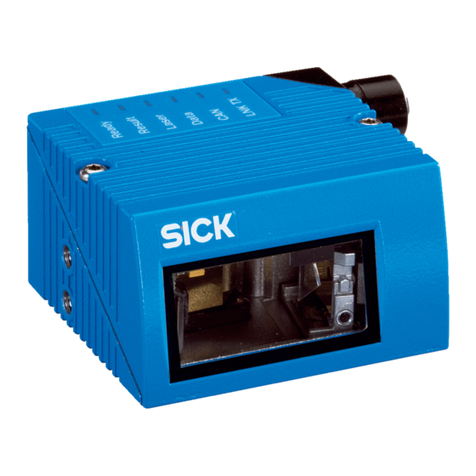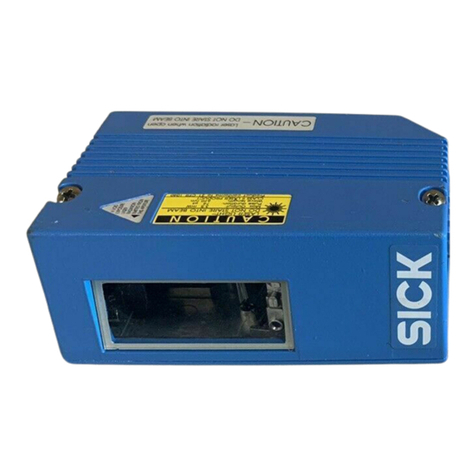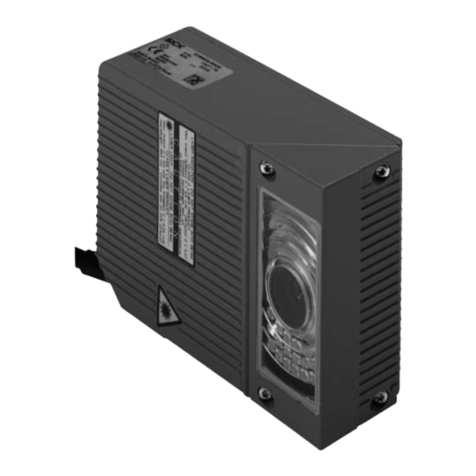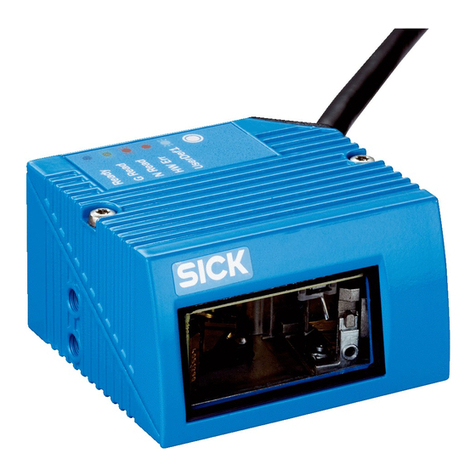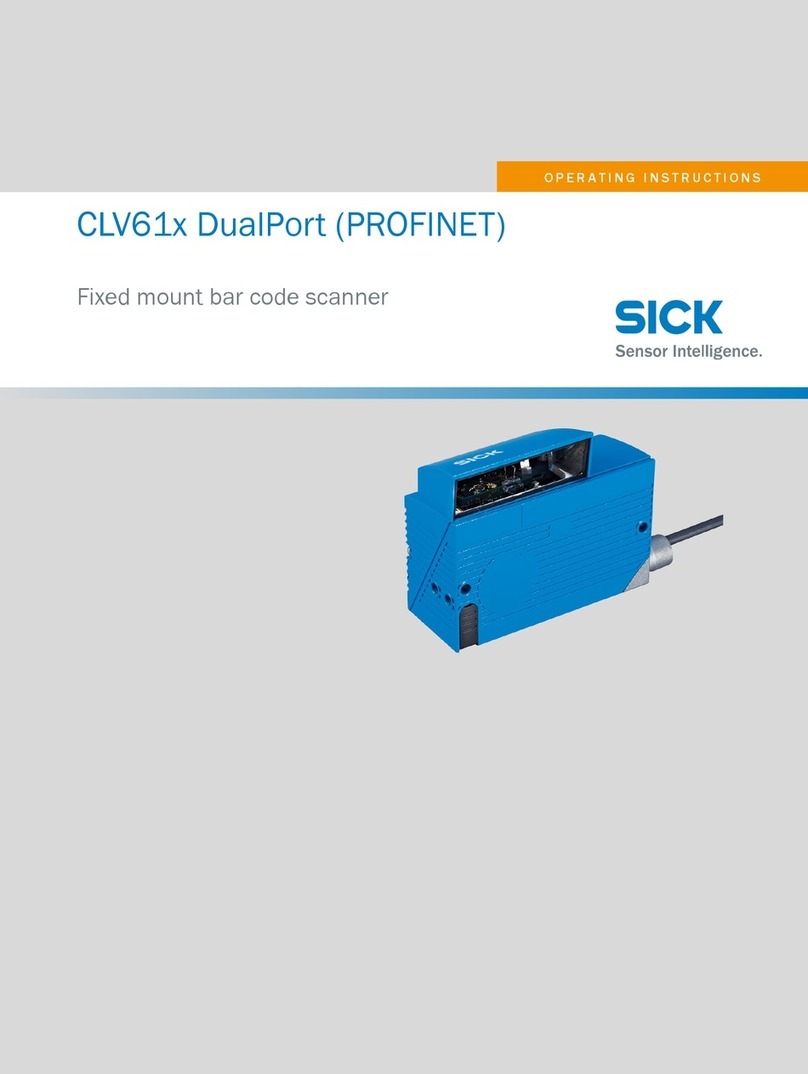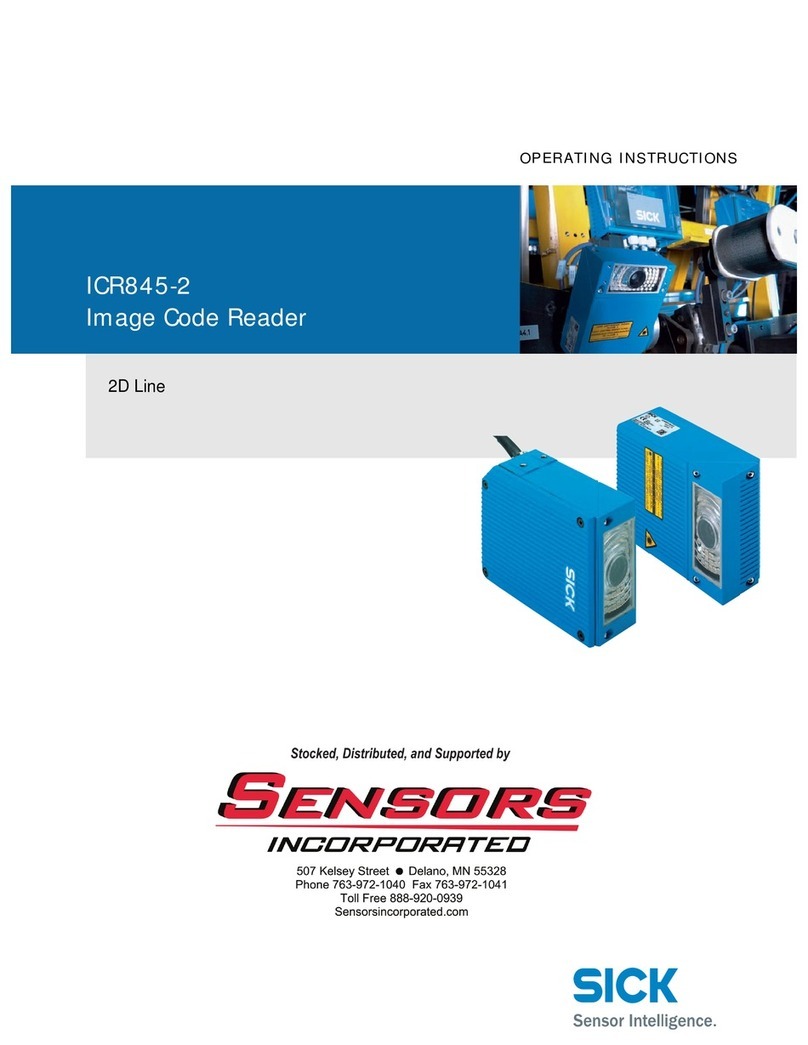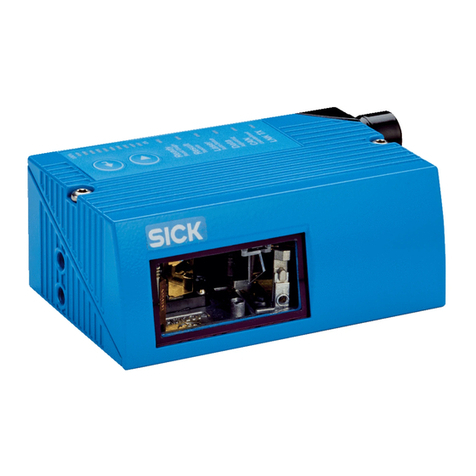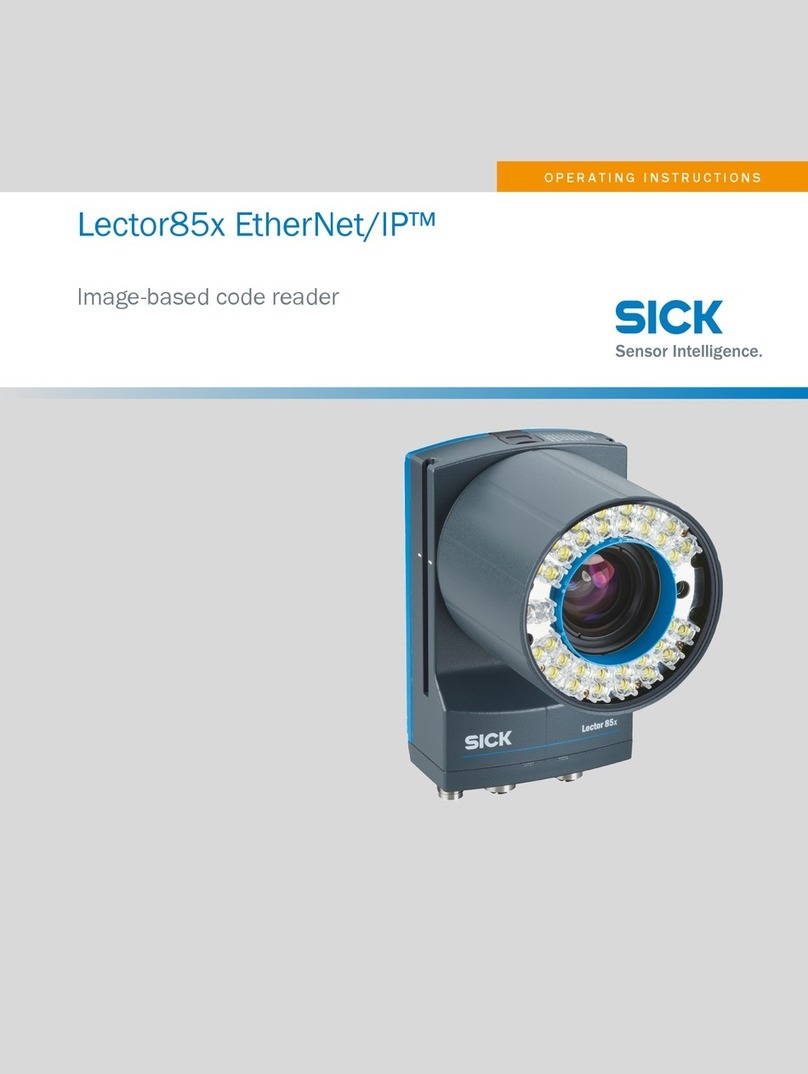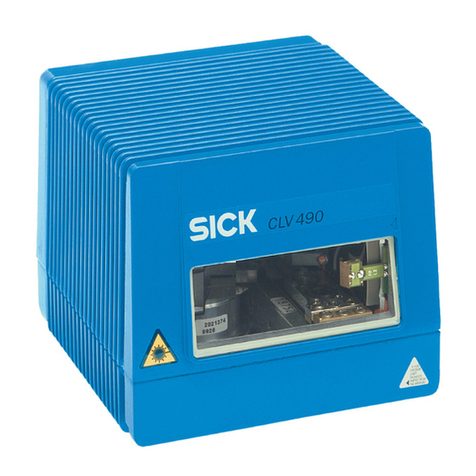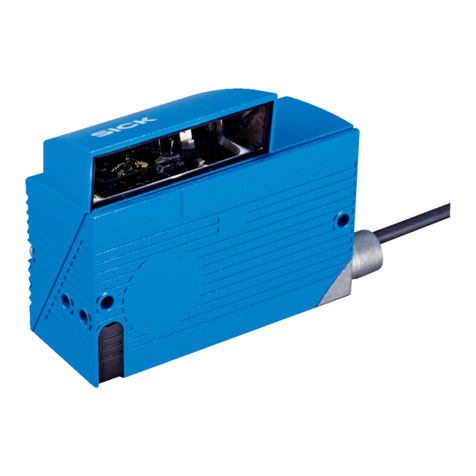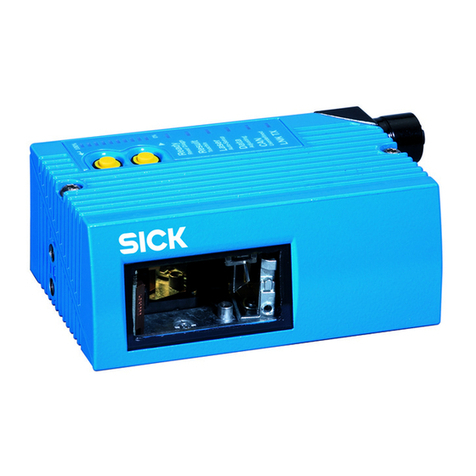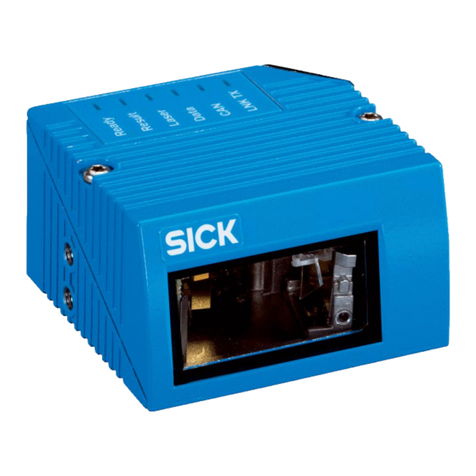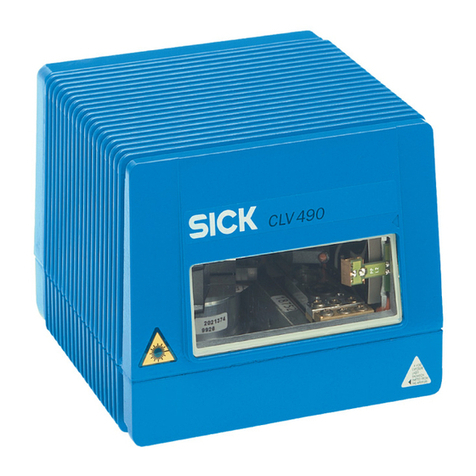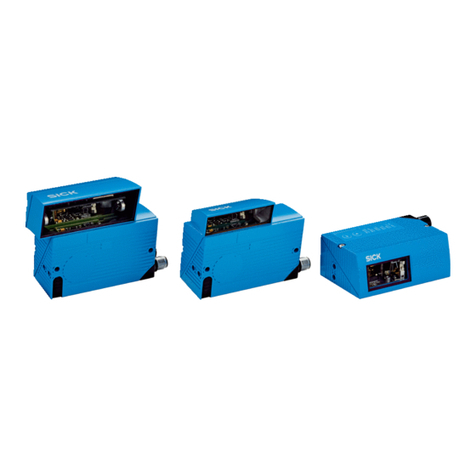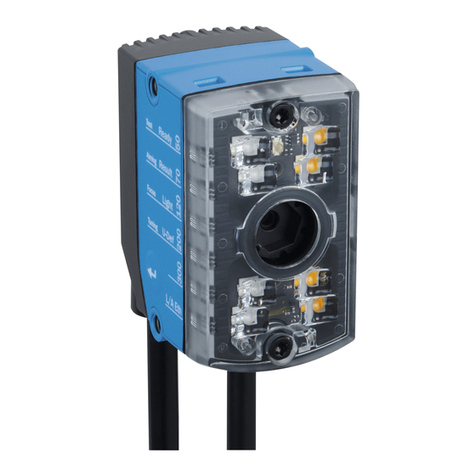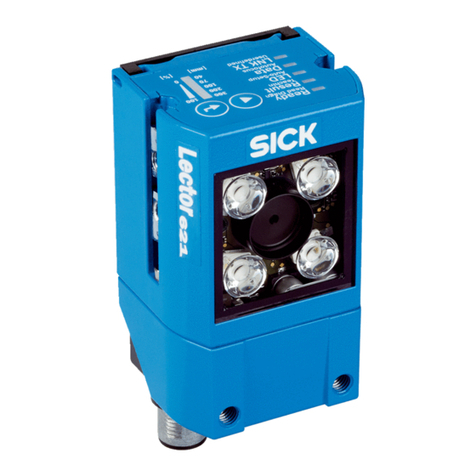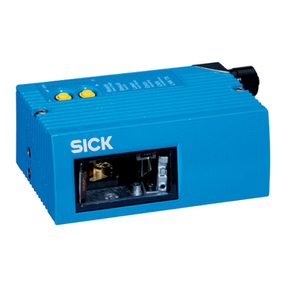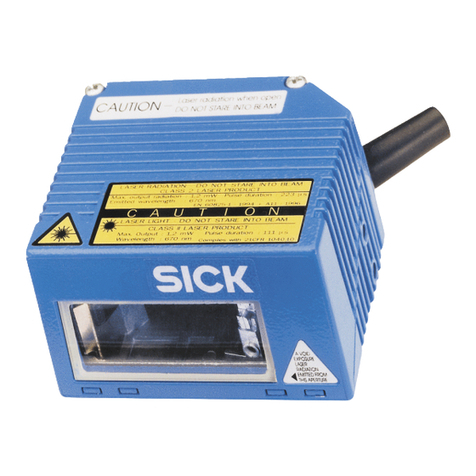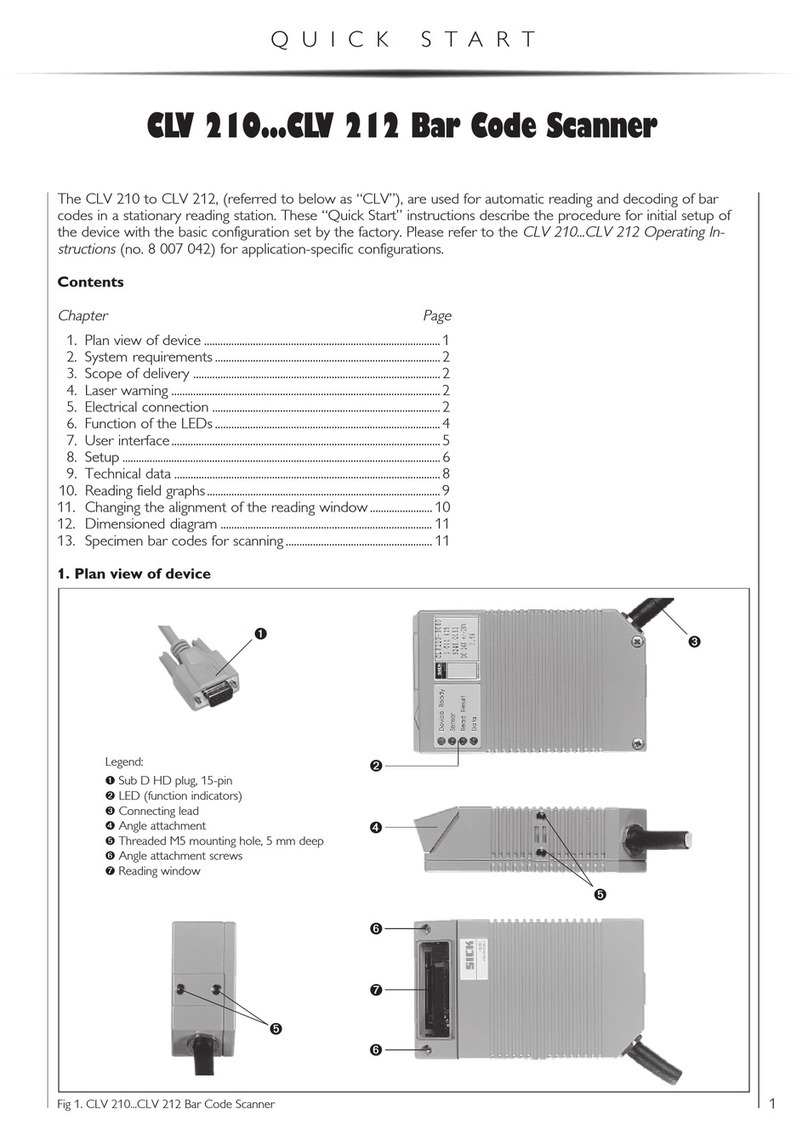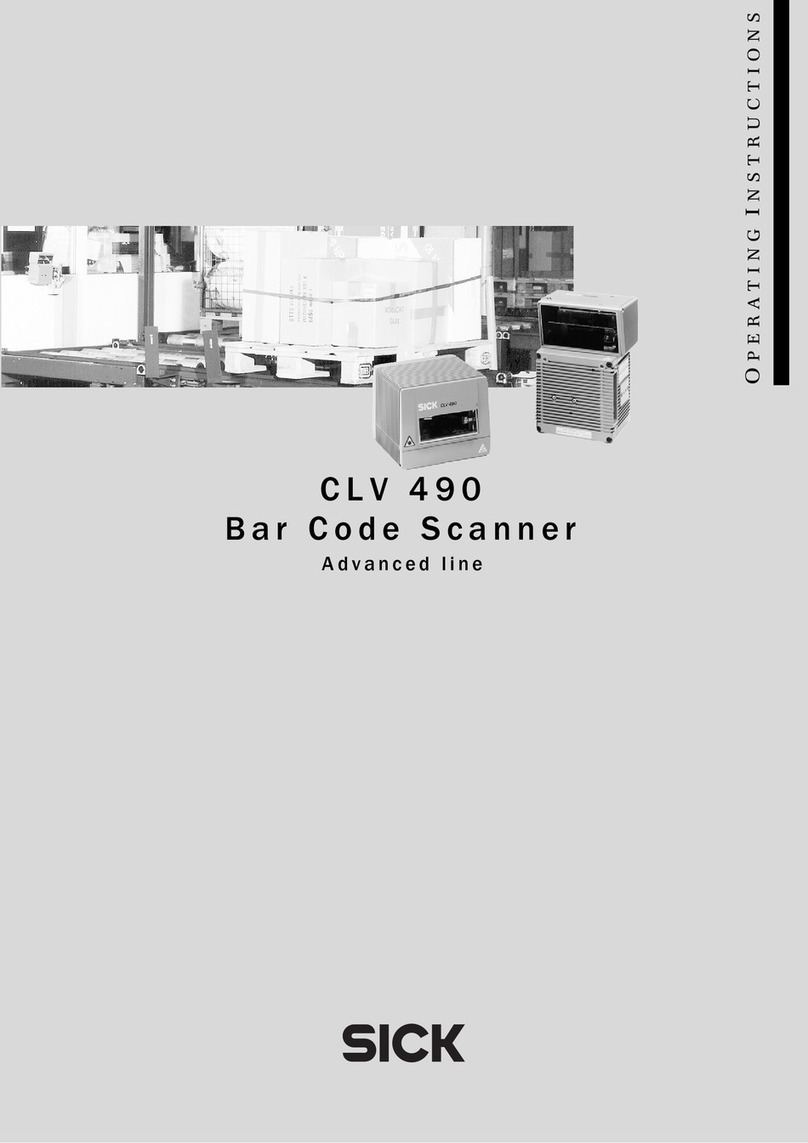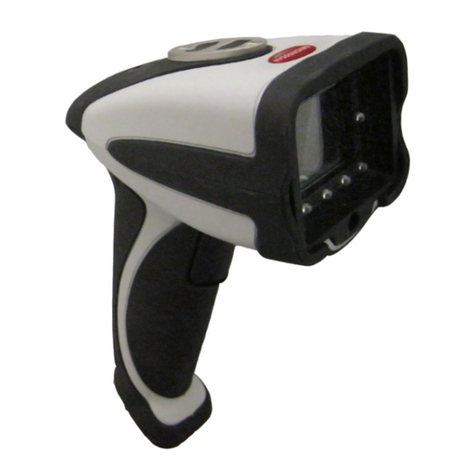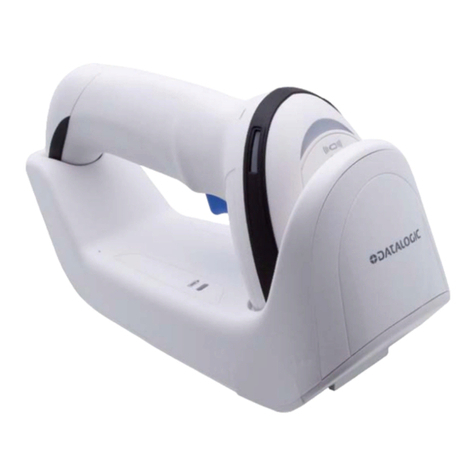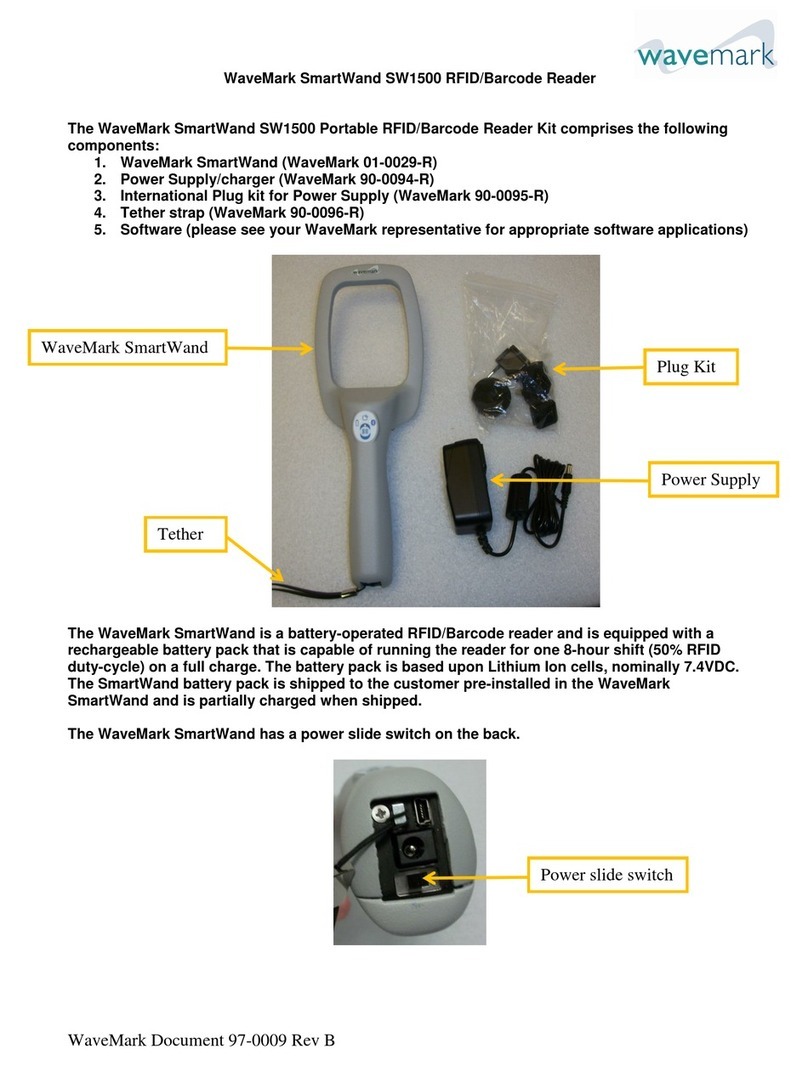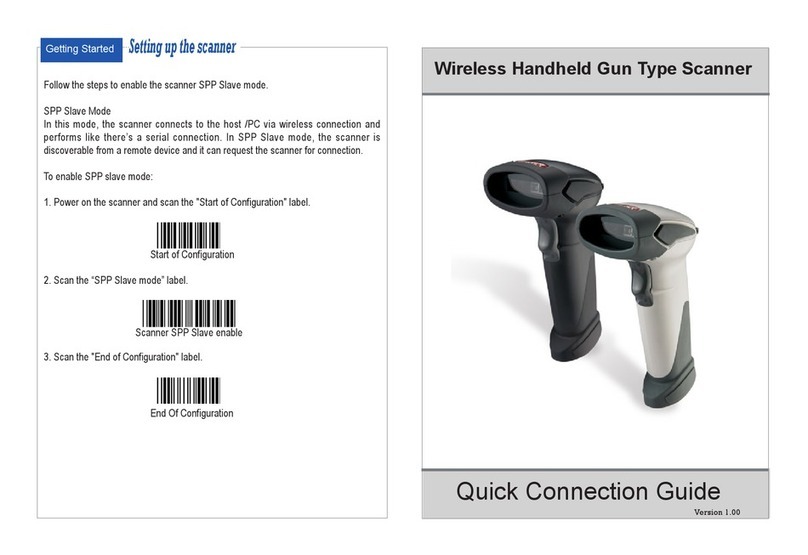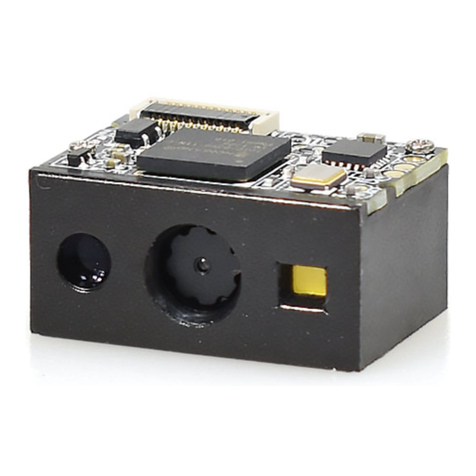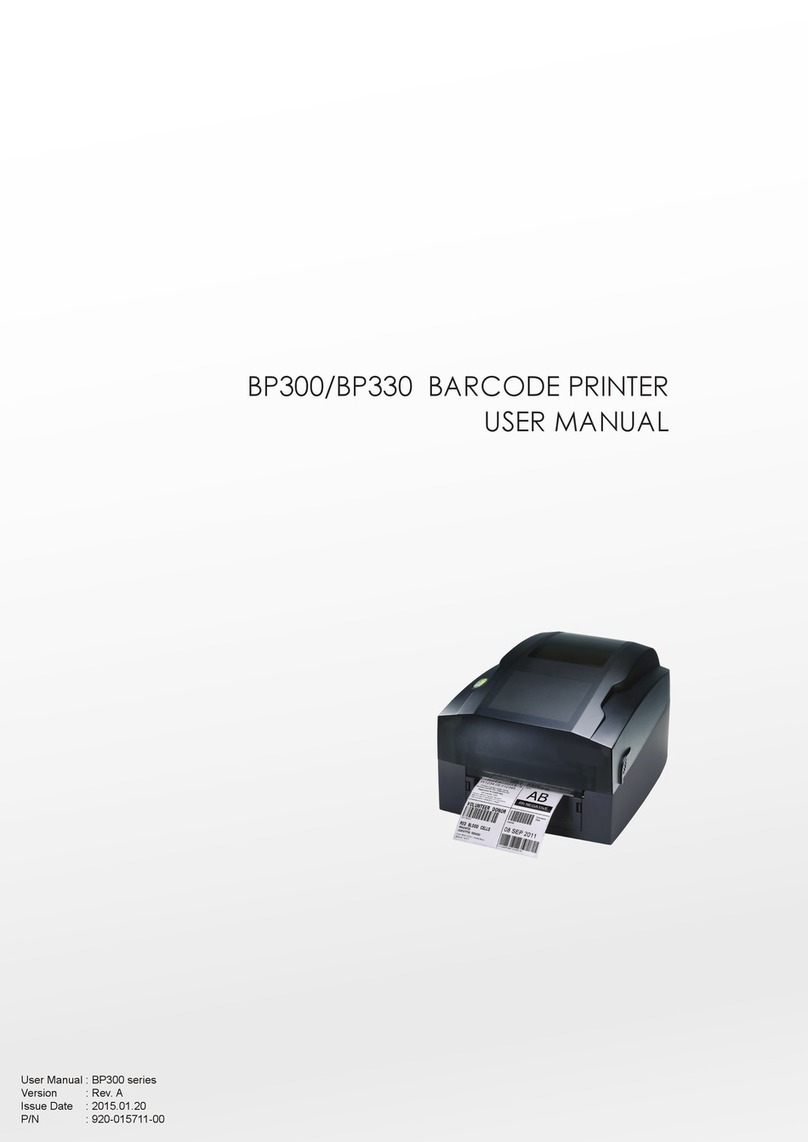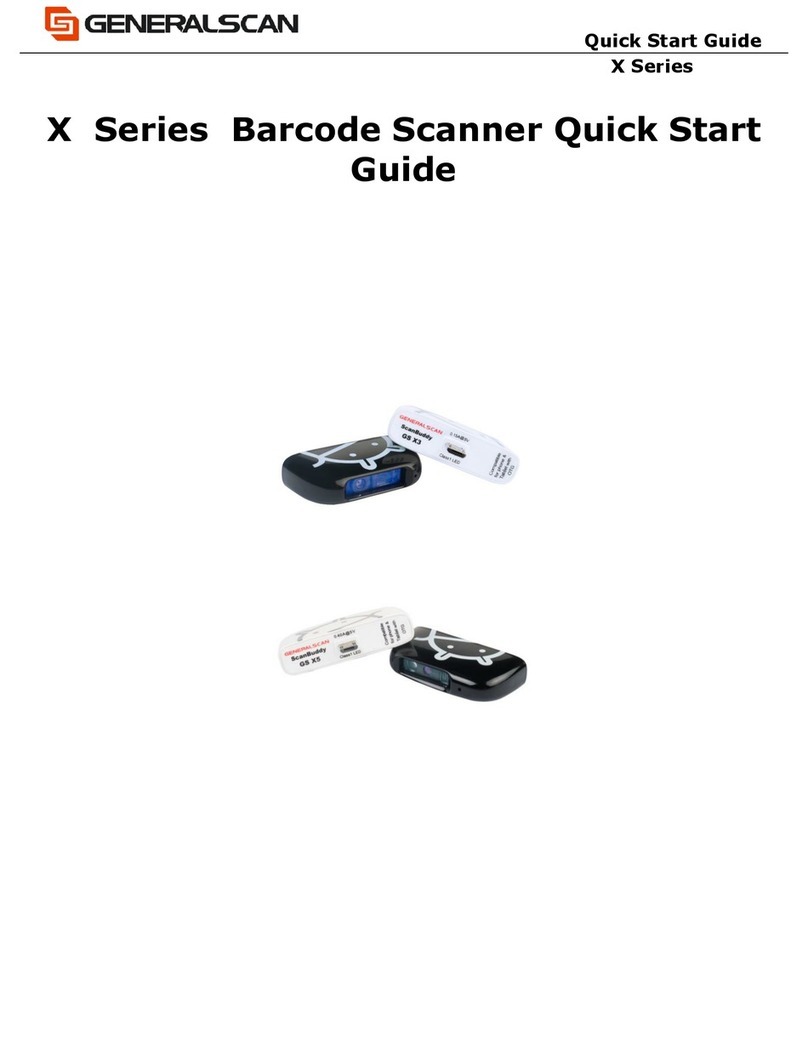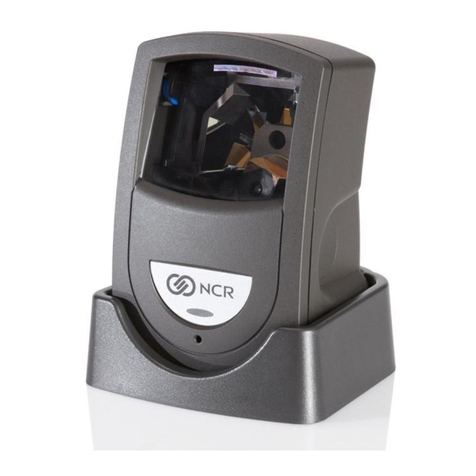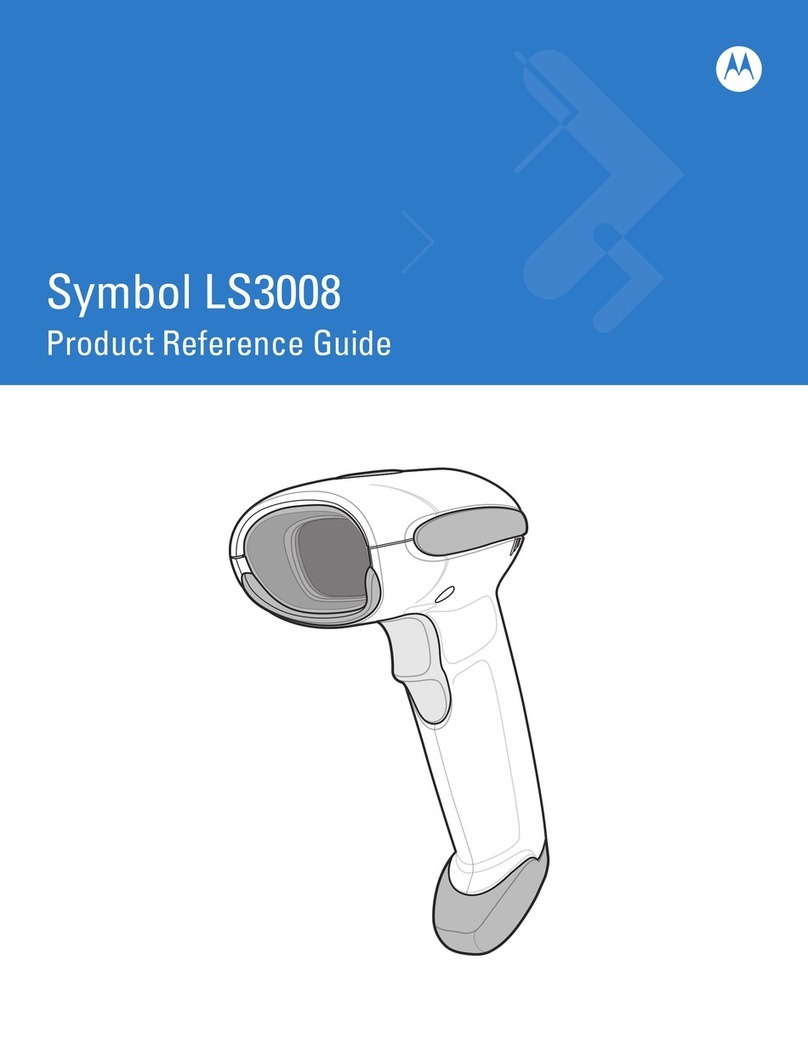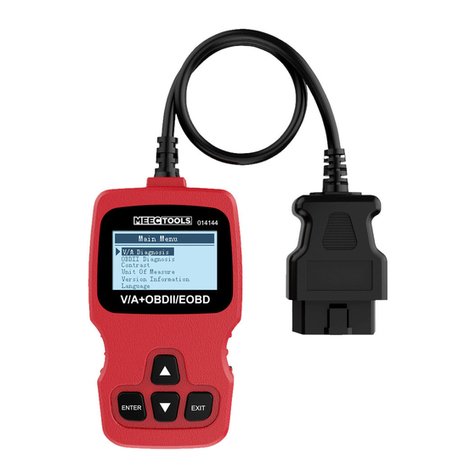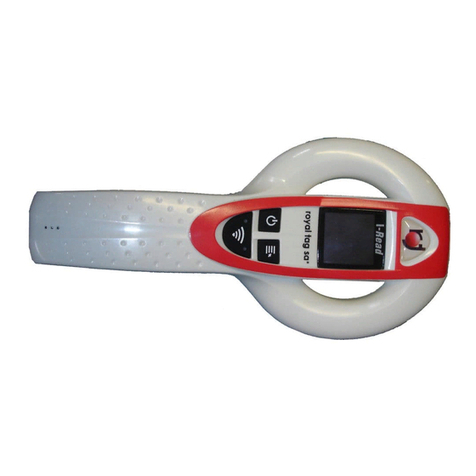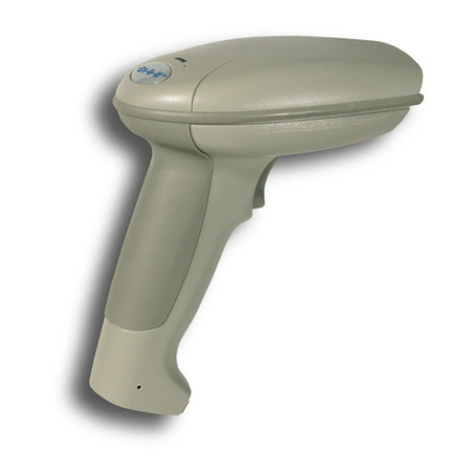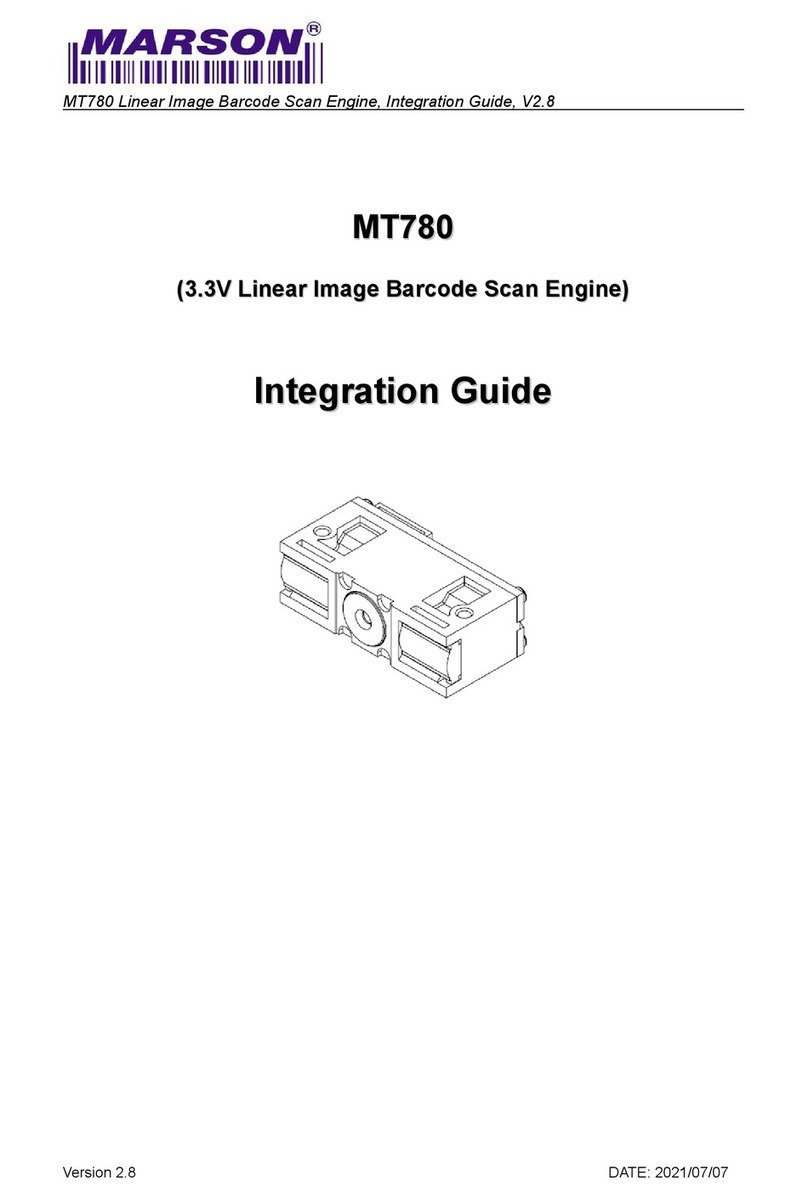
© SICK AG • Auto Ident • Germany • All rights reserved
4
Operating Instructions
8 008 22 /I982/08-00
CLV 1x Bar Code Scanner
The CLV 1x with fixed focus is used to detect and decode bar codes in a
stationary reading station automatically, e.g. on objects on a conveyor belt. For this
purpose, it must be mounted securely on the station and supplied with an operating
voltage of .5...30 V DC to IEC 7 2. The CLV outputs the read result via its host
inteface to a higher-level computer for further processing.
1. Intended use
The CLV 1x is supplied with the following:
•two polling reflectors for automatic reading pulse generation
•a note on device (yellow) with power connection diagram
•an additional set of laser warning labels (Class 2) in German and French
One or more of the following, depending on the number of devices ordered:
•CLV 1x Operating Instructions, in German and English
•a CD-ROM with the CLV Setup program for Windows™, the online CLV Setup Help
(HTML) software and the browser Iview™
•a fold-out card with 12 printed profile bar codes
2. Sco e of delivery
The following are required to set up and operate the CLV:
•a SICK AMV 0-011 Connection Module (no. 1 017 132) or AMS 0-013
(no. 1 017 135)
Alternatively, an external power supply unit with an output voltage of .5 ... 30 V DC
to IEC 7 2 (functional extra-low voltage) and min. 3 W power output
•a PC with Windows-based GUI (Windows 3.1™, Windows 95™ or Windows NT™)
and serial port (COM x)
•an HTML browser (e.g. Netscape™) to use the online help
•an RS 232 data connection cable (e.g. no. 2 020 319).
Alternatively, the programming adapter for the LCV 10 (order no. available on
request) to connect the PC between the CLV 10 and AMV/AMS 0 as well as an
RS 232 data connection cable (e.g. no. 2 01 05 ) from the programming adapter
to the PC
•a 2 V DC ±20% operating voltage for the AMV 0 or 230 V AC (115V) ±10% for
the AMS 0
•a suitable sensor, e.g. a photoelectric switch, if the reading pulse is to be supplied
externally via the switching input on the CLV
3. System requirements
4. Laser rotection
Laser radiation!
The radiation emitted by the laser diode (red or IR light) on the CLV 10 is harmful to
the human eye. For this reason, do not look directly into the laser beam.
Opening the housing while the device is in operation does not prevent the laser diode
from being activated by the reading pulse.
The maximum output power of the laser beam at the reading window is 1
.
2 mW.
The CLV, therefore, is assigned to protection class 2.
Laser radiation, do not stare into the beam, class 2 laser roduct.
Max. out ut radiation: 1
. 2 mW (223 µµ
µµ
µs), emitted wavelength: 670 nm
See Section 15 for further safety instructions!
WARNING!
